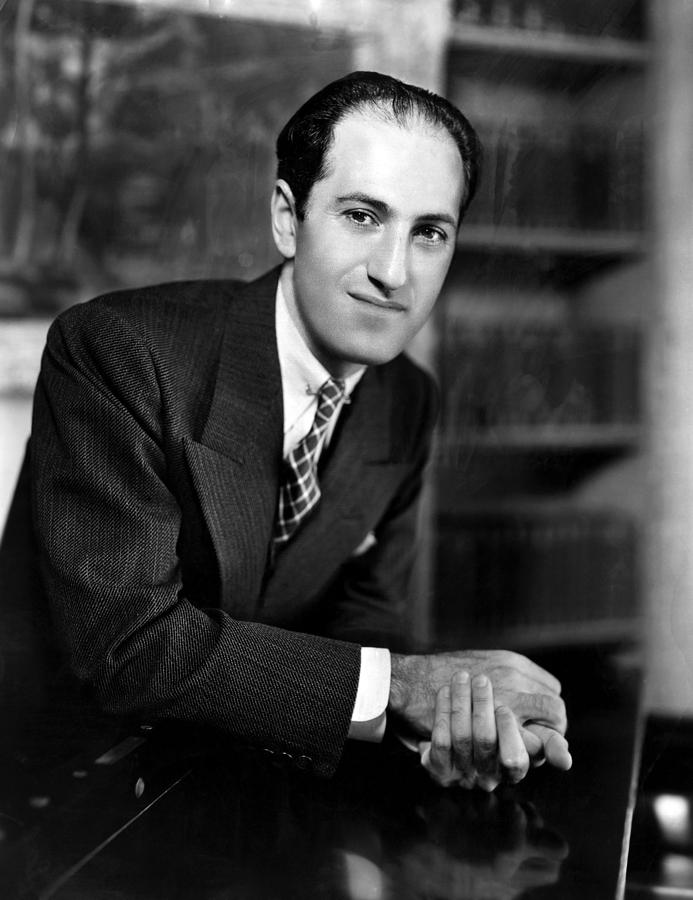

To increase his income, Gershwin recorded piano rolls under various pen names. Remick & Company, at a salary of $15 a week. After playing from memory a song he had heard on a neighbor's player piano, Georges parents invested in lessons.īy age 15 Gershwin had quit school and landed a job as pianist and "song plugger" for a Tin Pan Alley music-publishing firm, Jerome H. When a piano was brought into the Gershowitz home for brother Ira, George (age 12) was the one whose interest was sparked. Georges early interests were not in music, but sports. He first discovered music at age 10 at a friend's violin recital in a school auditorium in the lower East Side of Manhattan. His parents emigrated from Russia to the U.S.A in 1891. Gershwin was posthumously nominated for an Academy Award for his composition for the film “Shall we Dance”.George Gershwin was born Jacob Gershowitz. He died during an unsuccessful attempt to remove a brain tumor during surgery. George Gershwin died on Jwhile he was only thirty eight years old. Earlier, he also wrote the score for “Delicious”, and even though Fox Film Corporation rejected most of his score, Gershwin was praised for the part of the score that was selected for the movie. He is credited with the score for the 1936 movie “Shall We Dance”. Gershwin also worked for some Hollywood Studios. Today, the opera is considered to be one of the most important American folk operas of all time. A close contender for Gershwin’s most famous work was his 1935 opera “Porgy and Bess”. Gershwin’s also wrote “An American in Paris” in 1928 a work that would soon become part of the standard repertoire in Europe. The classical composition was known for its jazz influence and adventurous musical texture. Perhaps Gershwin is best known for his orchestral composition “Rhapsody in Blue”, which he wrote in 1924. “Of Thee I Sing” was so well received that it would go on to win the Pulitzer Prize for Drama. Other projects from the brothers included “Show Girl” in 1929, “I Got Rhythm” in 1930, and “Of Thee I Sing” in 1931. They followed their success with “Oh Kay!” in 1926, “Funny Face” in 1927, and “Strike Up the Band” in 1930. In 1924, the two brothers directed the stage musical comedy titled “Lady be Good”. Gershwin was also credited collaborating with his brother Ira. The duo would be credited for many of Broadway’s musicals from the early 1920’s, including “For Goodness’ Sake”, “Our Nell”, and “Piccadilly to Broadway”. Around this time, Gershwin met with music director William Daly.
:max_bytes(150000):strip_icc()/george-gershwin-at-work-559143865-5843271a5f9b5851e54192c9.jpg)

Gershwin went on to release “Rialto Ripples” in 1917 and “Swanee” in 1919, the latter composition would go on to became a major national hit. The result of this was that in 1916, Gershwin released his first song which was titled “When You Want Em, You Can’t Get Em. This position helped Gershwin encounter new musical ideas and it therefore enhanced his creativity. As a song plugger, he was expected to preview sheet music for customers on the piano. After Hambitzer’s death in 1918, Gershwin continued his musical education with American Composer Rubin Goldmark, and avant-garde composer Henry Cowell.Īt the age of fifteen, Gershwin started working as a song plugger for a publishing firm known as Jerome H. When Gershwin was twelve years old, his parents arranged for lessons from Charles Hambitzer, who was a pianist for the Beethoven Symphony Opera at that time. Influenced by his friend’s recital, Gershwin started playing Ira’s piano. At the age of ten, Gershwin attended the violin recital of his friend Maxie Rosenzweig it was a performance that changed young Gershwin’s life forever. He and his elder brother, Ira, spent time at the Yiddish Theatre District, often appearing as extras for Yiddish Theatre Productions. George Gershwin was born on Septemin Brooklyn, America to a family with Russian and Lithuanian heritage.


 0 kommentar(er)
0 kommentar(er)
